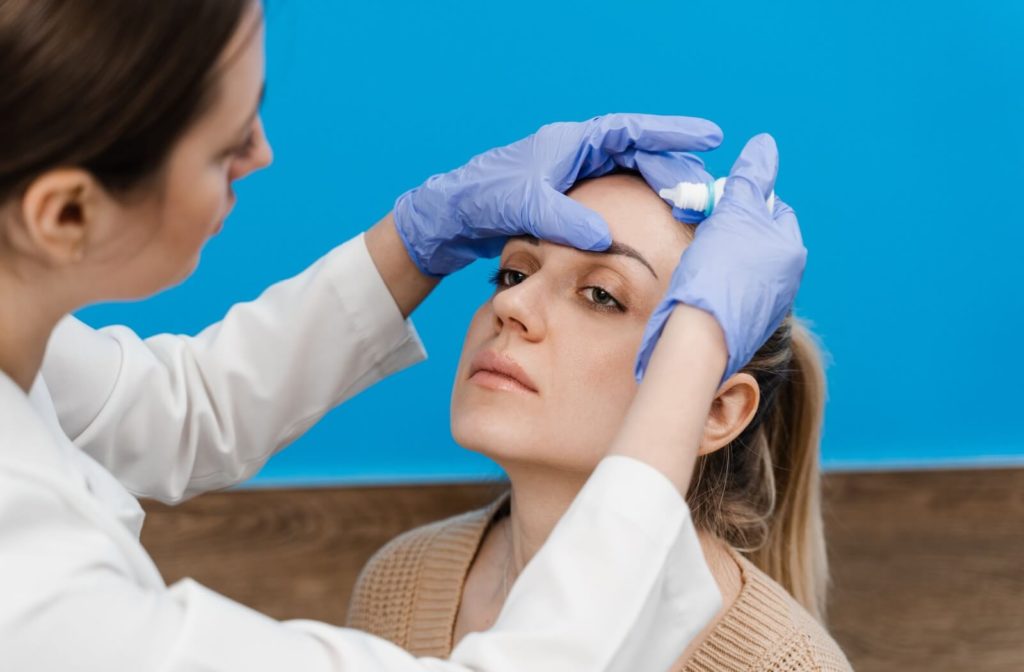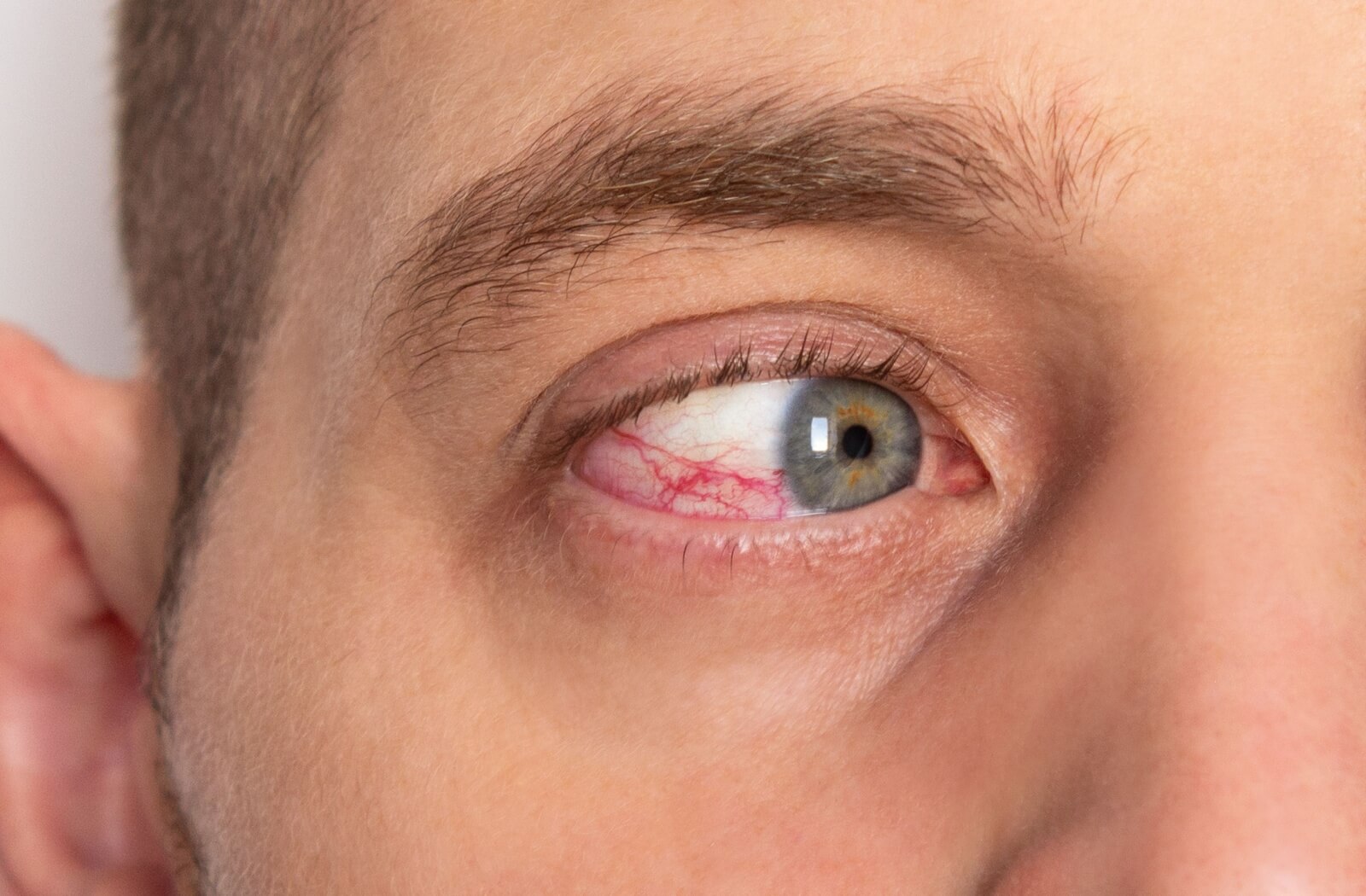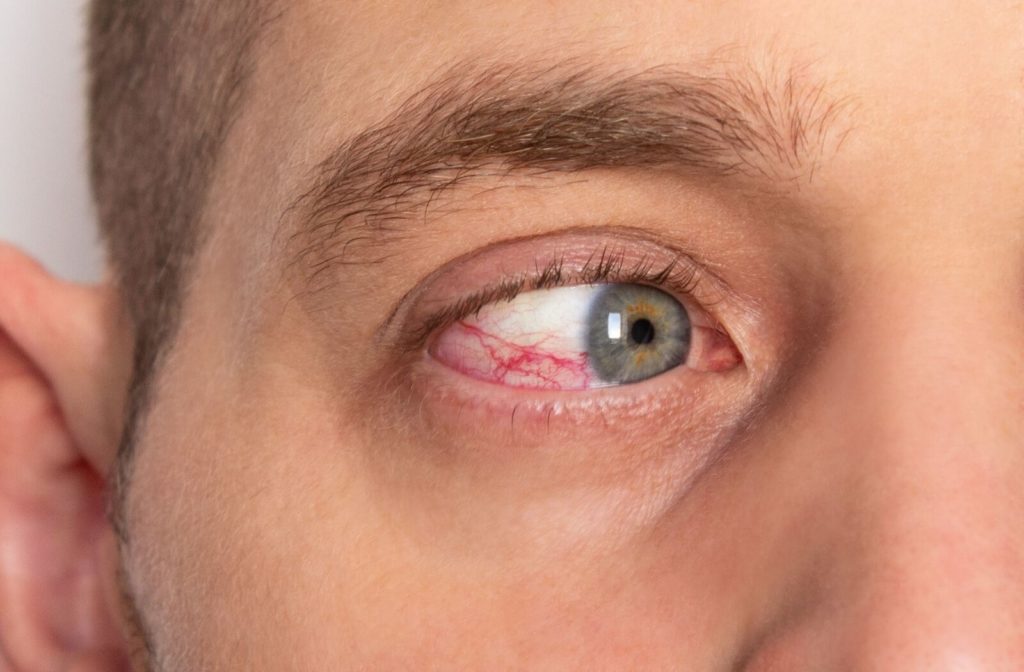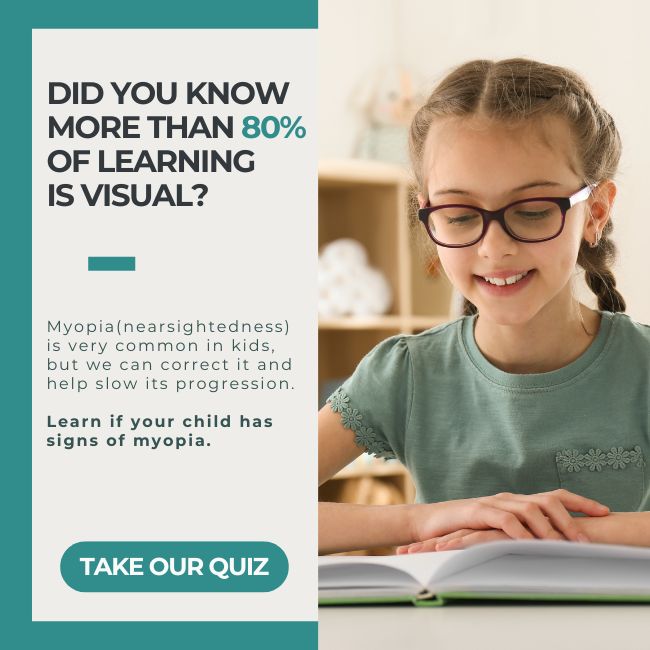Dry eye syndrome may sound like a minor inconvenience, but it can have severe consequences if left untreated. This condition affects millions worldwide, causing discomfort, blurred vision, and potentially even more severe complications.
While extremely unlikely, dry eye syndrome can technically lead to blindness as a result of potential complications that may arise if dry eye is left untreated. The chances of this are remote, however, as most people are forced to seek their eye doctor’s advice due to discomfort before things ever get that far.
We’ll provide some tips in this blog for finding relief from dry eye at home. But if your symptoms are persistent, you should book an eye exam with your doctor so they can rule out other potential underlying causes.
Understanding Dry Eye Syndrome
Dry eye syndrome, also known as ocular surface disease or simply dry eye, is a common condition in which the eyes don’t produce enough or the right quality of tears to keep them adequately lubricated. This can lead to inflammation and damage to the eye’s surface.
The increasing use of digital devices has also contributed to a rise in dry eye alongside an increase in digital eye strain among younger populations. Whether you’re glued to a computer screen for work or just constantly checking your smartphone, prolonged screen time can exacerbate dry eye symptoms.
Symptoms & Causes of Dry Eye
Recognizing the symptoms of dry eye is the first step toward effective management. Common signs include:
- A stinging, burning, or scratchy sensation in the eyes
- Sensitivity to light
- Redness of the eyes
- A feeling of having something in your eyes
- Difficulty wearing contact lenses
- Difficulty with nighttime driving
- Watery eyes, which is the body’s response to the irritation caused dry eyes
- Blurred vision or eye fatigue
Several factors can contribute to the development of dry eye. These include:
- Aging, as tear production tends to diminish as people get older
- Certain medical conditions like diabetes, rheumatoid arthritis, and thyroid disorders
- Medications such as antihistamines, decongestants, and antidepressants
- Environmental factors like wind, smoke, and dry climates
- Prolonged use of computers and digital devices
- Hormonal changes, especially in women during pregnancy, menopause, or while using birth control pills
Understanding these triggers can help manage and prevent the onset of dry eye.
Link Between Dry Eye & Vision
While dry eye primarily causes discomfort, it’s also important to understand how it can impact your vision. Tears are essential for maintaining the health of the front of the eye, and for providing clear vision. When the eyes aren’t properly lubricated, this can lead to various vision problems.
Untreated dry can cause chronic inflammation and damage to the surface of the eye, leading to complications such as:
- Corneal ulcers or abrasions
- Infections
- Scarring
- Decreased quality of life due to constant discomfort and visual disturbances
These issues highlight the importance of addressing dry eye early and effectively to maintain optimal eye health and prevent further complications.
Understanding the Risk of Blindness
A pressing question for those with dry eye is whether it can lead to blindness. While dry eye itself does not directly cause blindness, the complications arising from untreated dryness can significantly impair vision and, in severe cases, cause irreversible damage.
For instance, chronic inflammation can lead to corneal ulcers and scarring, both of which can severely affect vision. In extreme cases, these complications may require surgical intervention or even a corneal transplant. So, while dry eye is not a direct cause of blindness, neglecting its symptoms and failing to manage the condition can result in severe vision impairment.
Preventive Measures & Treatments
The good news is that there are several ways to manage and treat dry eye effectively. Here are some preventive measures and treatments to consider:
Lifestyle Changes
Making simple adjustments to your daily habits can significantly reduce dry eye symptoms. These changes include:
- Taking regular breaks from screens to rest your eyes
- A diet rich in vitamins and minerals to support eye health
- Using a humidifier to add moisture to the air
- Wearing sunglasses to protect your eyes from wind and UV rays
- Staying hydrated by drinking plenty of water
- Quitting smoking and avoiding exposure to smoke
Over-the-Counter (OTC) Solutions
There are several OTC products available to help manage dry eye symptoms, such as:
- Artificial tears or lubricating eye drops
- Eye ointments for overnight use
- Warm compresses to relieve discomfort and improve tear production

Prescription Treatments
Prescription treatments may be necessary for more severe cases of dry eye. These can include:
- Anti-inflammatory eye drops to reduce inflammation
- Prescription medications to increase tear production
- Punctal plugs, which are tiny devices inserted into the tear ducts to reduce tear drainage
Advanced Therapies
Advanced therapies may be required in some cases to manage dry eye effectively. These can include:
- LipiFlow: Uses heat and pressure to open blocked oil glands in the eyelids
- Intense pulsed light (IPL) therapy: Reduces inflammation and improve gland function
- Autologous serum eye drops: Made from the patient’s blood, can promote healing and lubrication
Consulting an eye care professional is essential for determining the best treatment plan for your needs, as there is no one-size-fits-all answer to treating dry eyes.
Talk to Your Eye Doctor About Your Symptoms
Dry eye is a common condition that can significantly impact your quality of life. And even though it doesn’t directly cause blindness, there’s no reason to ignore the symptoms. Early detection, lifestyle changes, and appropriate treatments are essential for managing dry eye and preventing long-term damage.
Contact our team at Insight Eyecare if you’re experiencing dry eye symptoms. One of our experienced optometrists can examine your eyes to ensure there’s nothing serious going on. Then, we can offer a tailored treatment plan to get your eyes feeling great again.







